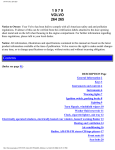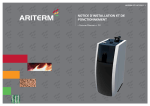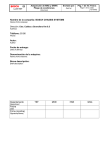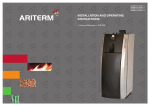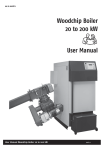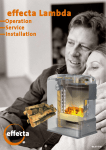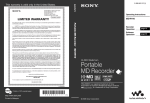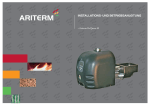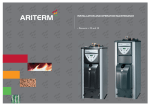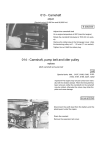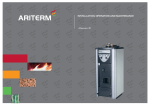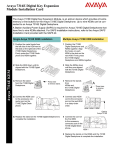Download INSTALLATION AND OPERATING INSTRUCTIONS
Transcript
ARITERM-VTT-S-06765-11.1 INSTALLATION AND OPERATING INSTRUCTIONS • Ariterm Biomatic+ 40 TABLE OF CONTENTS GENERAL INFORMATION General information..................................................................................... 2 Transport, storage and unpacking.............................................................. 2 Technical data............................................................................................... 3 Functional description.................................................................................. 4 Safety and alarms.......................................................................................... 4 Control panel................................................................................................. 5 Burner operating principle........................................................................... 5 Boiler installations........................................................................................ 6 Pipe installations........................................................................................... 7 Wiring diagram............................................................................................. 8 Start-up and stop.......................................................................................... 9 Burner settings............................................................................................10 Burner parts.................................................................................................10 Menu structure......................................................................................11-14 Heating circuit settings..............................................................................15 Heat regulation examples..........................................................................16 Heat Regulation menu structure..............................................................16 Regulating unit installation and use.........................................................17 Lambda sensor............................................................................................17 Alarms and troubleshooting................................................................18-19 Decommissioning.......................................................................................20 Most common spare parts.........................................................................20 Service and maintenance......................................................................21-23 Wood pellets as fuel....................................................................................24 Feeding system............................................................................................25 Declaration of conformity..........................................................................26 Installation record.......................................................................................27 Guarantee card......................................................................................28-30 Notes .........................................................................................................31 Ariterm Biomatic+40 is a cost-effective, resistant and environmentally friendly combination of a central heating boiler and a pellet burner intended for use for the heating of single-family detached houses and the production of hot domestic water using only wood pellets. Additional/ backup heat is produced by an incorporated electrical resistance (3+6 kW). Standard equipment includes a flue gas blower, an automatic convection cleaning system and an automatic heating circuit regulation system. Detailed technical data can be found on page 3. To make use of all features of the boiler and burner, it is important to observe these instructions. Keep this manual in a safe place for future reference. Read this manual carefully before starting to use your Ariterm Biomatic+40 pellet heating centre. The power of the pellet burner depends on how many pellets can be fed into and burned in the burner head during one hour. (This means burning of wood pellets of the usual kind, which approximately comply with the fuel specifications described in this manual.) NOTE! Follow the recommendations contained in this manual when using and servicing the burner and the boiler. TRANSPORT, STORAGE AND UNPACKING Receipt and acceptance The boiler is delivered in a wooden frame. The base is a platform from which the boiler can be safely lifted. The package should be unwrapped as close to the installation site as possible. The factory has insured the boiler against damage during transport from the factory to the first intermediate storage site. It is important for the person who receives the boiler to verify the state of the boiler before its acceptance. In case of damage, the dealer must be contacted without delay. Storage The boiler can be stored outside under a rain cover for a short period of time. However, the preferred option is to store it inside. Opening the package After opening the package, open the hatch and check the accessory list to make sure that all loose accessories are contained in the package (cleaning brush handles are attached to the package). Disposing of the package The plastic cover is landfill waste and the boards can be burned. ARITERM-VTT-S-06765-11.1 ARITERM SWEDEN AB • ARITERM OY • Asennus ja käyttöohje • Installation och driftanvisning • Installation and operating instruction • UK 25.05.2012 • 2/32 TECHNICAL DATA ARITERM BIOMATIC+40 • • • • • • • • • • • • Standard delivery Four-way mixing valve ESBE TM 20 Sweeping gear Dirt trap Brick support Flue duct joint Shunt motor ESBE ARA661 3-point SPDT 230Vac 6Nm 120s Outdoor temperature sensor Indoor temperature sensor Supply water temperature sensor Automatic convection cleaning system Flow switch Flue gas fan Optional • Combined flue duct • Residual oxygen measurement (Z19014) • Heating circuit 2 (incl. supply water sensor and shunt motor) • Indoor temperature unit (14101) TECHNICAL DATA Performance Power with pellets Combustion efficiency 12–40 kW 93 % Dimensions Dimensions (width x depth x height) Empty weight Water volume 606 x 1,350 x 1,618 mm 455 kg 173 l Working pressure: boiler Working pressure: heat exchanger Working temperature Recommended underpressure in the combustion chamber Production of hot domestic water 0.5–2.5 bar max 10 bar max 120 o C Design and adjustment values Connections Electrical values | burner side and resistors Additional heating circuit unit Domestic water Expansion Discharge Flue pipe connection Recommended flue pipe diameter and length DN 25 male Cu Ø 22 mm DN 25 male DN 15 female Ø 140 mm Ø 140 mm steel pipe or equivalent, length min 4 m Power supply Supply cable Fuse size Power in operation 400 V, 3N~, 50 Hz 3+6 kW resistor, MMJ 5x2.5s 3+6 kW resistance, 3x16 A Burner, ignition 560 W Burner, normal 60 W about 10 kW (depending on equipment) Power in connection ARITERM-VTT-S-06765-11.1 8-15 Pa 1 shower (12 l/min), xxx l/+40 °C) 2 showers (20 l/min, xxx l/+40 °C) 1. Discharge valve DN 15, female 2. Flue duct Ø 140 mm 3. Additional heating circuit unit DN 25, male 4. Expansion unit DN 25, male 5a.Heating circuit four-way mixing valve supply 5b.Heating circuit four-way mixing valve return 6. Cold domestic water 22 mm Cu 7. Hot domestic water 22 mm Cu 8. Electrical connections 9. Cleanout hatch 10.Ash box 11.Return DN 25, female 12. Display / keyboard 13. Convection sweeper 14. Flue gas blower ARITERM SWEDEN AB • ARITERM OY • Asennus ja käyttöohje • Installation och driftanvisning • Installation and operating instruction • UK 25.05.2012 • 3/32 FUNCTIONAL DESCRIPTION SAFETY AND ALARMS Heating with the Ariterm Biomatic+40 pellet heating centre is similar to oil heating in many ways. The main difference is that heating with solid fuel produces a certain amount of ash, which must be removed at certain intervals. If the ash is not removed, combustion efficiency will decrease and the burner may malfunction. For safety reasons, the pellet heating centre and fuel store must be placed apart from each other to prevent possible damage. Any malfunctions or damages caused by incorrect handling will then be limited to the burner. The fuel store must be built as a separate, fire-classified, confined space. The BeQuem pellet burner is equipped with automatic ignition. However, it can also be ignited manually when necessary. The electric ignition system of the burner will only be activated during cold starts, i.e., when the system has been inactive for a long period and the boiler temperature has dropped to at least 8 °C below the target temperature. During the heating process, the necessary ignition cycles take place by means of the embers in the burner head. This saves electric energy. Faults that cause the system to stop are indicated by a red indicator light. In addition to this, a text message appears on the display indicating the cause of the fault. The burner and the incorporated feeding system operate automatically. The operation of the burner is controlled by the temperature sensor installed in the boiler. The burner head contains an accurately defined mixture of fuel and air. This ensures perfect combustion which is both cost-effective and environmentally friendly. The auger burner is overpressurised during operation. The purpose of this is to reduce the risk of damage to the burner if the draught is weak. During every operating cycle, a small amount of pellets (150 g) is fed from the pellet store via the external feeding system to the upper connection of the burner. To make it possible to dispense an accurate and equal amount of pellets during every cycle, the dispensing is carried out by means of a separate feeding auger via the blocking feeder and auger burner to the burner head. As the auger burner feeds pellets forward three times faster than they arrive at the auger, a safety zone, containing only single pellets, is created between the burner head and the upper connection. This safety zone always remains intact even in the event of power failure, insufficient maintenance or equipment breakage. Alarms are described in “Troubleshooting”. Wood pellets with a diameter of 6 or 8 millimetres (not in combination) are the recommended fuel for the boiler. Ash is removed from the ash box located in the lower part of the boiler. Ash can also be removed into a special ash pan by means of an ash trap or a common vacuum cleaner. However, the ash may still be hot. Therefore, the ash trap must be heatresistant. Standard equipment includes an automatic heat regulation system that adjusts the supply water temperature according to the temperature outside. ARITERM-VTT-S-06765-11.1 The feeding auger must be installed in such a way that its position with respect to the drop funnel enables the drop pipe to hang free outside the burner should a fire occur in the back. ARITERM SWEDEN AB • ARITERM OY • Asennus ja käyttöohje • Installation och driftanvisning • Installation and operating instruction • UK 25.05.2012 • 4/32 BURNER OPERATING PRINCIPLE CONTROL PANEL 2 3 4 1. 2. 3. 4. 5. 6. Temperature Boiler 80(80)°C Flue gas -40°C Burner off (on) Auger, external Manual operation off 7. Inner circulation pump switch Inner circulation pump fuse Display Over heating sensor Main switch Operation and alarm indication by means of an indicator light Operation button Upper connection Dispening auger Blocking feeder Primary air pipe Ignition pipe 1 7 6 5 Ignition resistance Green: The burner is on Red: Alarm (the burner is off) Blinking light: Warning light (do not turn the burner off) Auger Burner Arrow keys: browsing menus / changing setting Safety zone against fire in the back Fan Pellets are fed to the burner head from below (underfeeding principle) C button: exiting menus / acknowledging warnings / acknowledgement of setting Enter button: selecting settings / go to sub-menu ARITERM-VTT-S-06765-11.1 ARITERM SWEDEN AB • ARITERM OY • Asennus ja käyttöohje • Installation och driftanvisning • Installation and operating instruction • UK 25.05.2012 • 5/32 BOILER INSTALLATIONS BOILER INSTALLATIONS The boiler should be installed by a company with the proper professional qualifications. The installation must be carried out in such a way that it meets the requirements of at least Standard SFS 3332. NOTE! All electrical connections must be carried out by a professionally qualified electrician. Space requirement The boiler room must be rated at fire resistance class EI 60 or above according to Part E9 of the National Building Code of Finland. At least one metre of free space must be left in front of the boiler for cleaning and maintenance operations. It is also recommended to leave about 80 cm of free space on the other side and at least 50 cm above the boiler. NOTE! The boiler must be located at a distance of no less than 180 mm from the back wall. In addition, it must be possible to remove the flue gas blower whenever maintenance requires it. Flue pipe connection and combustion air intake Silicon sealant with a temperature resistance of 350 °C can be used as a sealing compound for joints. The flue pipe must be made of steel or equivalent material. The flue pipe length must be dimensioned according to the building requirements. The ventilation air intake must not be covered. Pipe installations Before installing the boiler, the heating network must be flushed and checked by means of a water pressure test. After installation, make sure that all joints are tight. The factory is not responsible for damages caused by leaking joints. Flue pipe connection and ventilation air intake Recommended flue pipe diameter Ø 140 mm Flue pipe length 4m Recommended underpressure in the combustion chamber 8-15 Pa Ventilation air intake 200 cm2 * Measure the vacuum in the measurement hole on the left-hand side of the burner. Slacken off the black screw. NOTE! The vacuum in the chimney is not critical because the boiler is equipped with a suction fan. However, it must be dimensioned to be able to evacuate the flue gases without overpressure occurring as the flue gases could then leak into the building. ARITERM-VTT-S-06765-11.1 Dirt trap and manometer installation It is recommended that the dirt trap delivered with the boiler be installed in the cold water pipe before the heat exchanger. There is no manometer in the boiler. Therefore, it must be installed in the heating network. Safety valve installation The valve must be CE marked. Its maximum opening pressure must be 2.5 bar and its minimum size DN 15. The safety valve must be chosen according to the highest pressure class of the combination of devices. Devices that can close the connection must not be installed between the valve and the boiler. The blowdown pipe must be dimensioned and installed in such a way that it does not limit the valve blowdown efficiency and does not cause dangerous situations during the operation of the valve. Electrical installations A pellet burner, a 3+6 kW electrical resistance and an internal circulation pump with its switches are installed in the boiler and are ready for use. The boiler contains an overheat protection for the burner and the electrical resistance. The electrical installations related to the boiler must be carried out by an installer with the relevant qualifications. The connection is carried out according to the enclosed connection diagram. A safety/maintenance switch must be installed in the voltage supply system of the boiler. Terminal strips and connection diagrams are under the front panel. Voltage supply, possibly a circulation pump and a flow switch as well as an alarm output, for example, for a GSM alarm are connected to the terminal strips. Shunt motors are also connected to the terminal strips. Separate terminal strip for heat regulation sensors (supply water sensor 1 and 2, indoor temperature sensor and outdoor temperature sensor). Before commissioning Before starting the boiler, the following should be checked: • the heating network and the boiler are full of water (pressure at least 0.5 bar). • air is removed from the internal circulation pump through the venting screw located in the pump head. • the flue damper (if any) is open. • the circulation damper located in the convection part of the boiler is in place. • the circulation pump is running. • the network valves are open. • the ventilation air intake is open. • the safety valve is in working order and there are no obstacles between it and the boiler. ARITERM SWEDEN AB • ARITERM OY • Asennus ja käyttöohje • Installation och driftanvisning • Installation and operating instruction • UK 25.05.2012 • 6/32 PIPE INSTALLATIONS VV VW KV CW TV DW ARITERM-VTT-S-06765-11.1 1. ARITERM BIOMATIC+ 2. 4-WAY VALVE, FLOOR HEATING (RADIATOR HEATING) 3. CONNECTION SET OF THE ADDITIONAL HEATING CIRCUIT (RADIATOR HEATING) 4. HEAT PIPE PUMP, FLOOR HEATING 5. HEAT PIPE PUMP, RADIATOR HEATING 6. FLOOR HEATING NETWORK MANIFOLDS 7. RADIATOR HEATING NETWORK 8. EXPANSION VESSEL 9. SERVICE SHUT-OFF VALVE 10. SAFETY VALVE 11. FILLING VALVE 12. FEED MIXING VALVE 13. DOMESTIC WATER CIRCULATION PUMP ARITERM SWEDEN AB • ARITERM OY • Asennus ja käyttöohje • Installation och driftanvisning • Installation and operating instruction • UK 25.05.2012 • 7/32 WIRING DIAGRAM ARITERM-VTT-S-06765-11.1 ARITERM SWEDEN AB • ARITERM OY • Asennus ja käyttöohje • Installation och driftanvisning • Installation and operating instruction • UK 25.05.2012 • 8/32 START-UP AND STOP Burner start-up and stop Turn the burner and the internal pump on from the operating switch. If the flow switch that controls the internal pump is on, set the operating switch to Off mode. The main menu, which shows the temperatures of boiler water and flue gases, will appear on the display. The main menu also shows the Start-up/Stop setting and mode of the burner. If the buttons are not pressed for 10 seconds, a graphic showing temperature and burner data will appear on the display. The first start-up differs from normal start-up in that there are no pellets in the burner. Likewise, there are no pellets in the external feeding system. Carry out the following actions in connection with the first start-up or if there are no more pellets in the store: 1. Turn the external auger on from the main menu and wait until pellets arrive at the upper connection of the burner. The external auger will automatically stop after 15 min (the setting can be changed). 2. Set the burner to ON mode. Cold start The burner will perform a cold start by using the ignition resistance when the boiler water temperature is more than 8 °C below the set value. The Burner setting shows the message “Start-up 1K”, the auger burner turns on and so does the red indicator light. Shortly afterwards, the blower and the ignition resistance turn on. A cold start consists of seven phases (1K–7K). When the flame detection system detects a flame in the burner head, the burner moves directly to phase 5K and the green indicator light turns on. When starting directly from phase 7K, the burner stops for 10 minutes in order for the combustion process to normalise in the burner head. If the flame does not ignite after phase 7K, the burner gives a cold start alarm as described in “Troubleshooting”. Power mode – Maintain mode After ignition, the burner starts using the Max power range. When the boiler water temperature rises to within 4 ºC of its set value, the burner starts using the Mean power range and will continue to use it until the set value is reached. When the target boiler water temperature is reached, the burner blower still runs for one minute before the burner moves to Maintain mode (heating method off ). While the burner is in Maintain mode, the auger burner brings pellets to the burner head every now and then in order to maintain the embers. (Ember Maintenance setting) Stop The burner can be stopped at any stage of the combustion process. Set Burner to Off in the main menu. The blower will continue to function for one minute after the burner has been stopped. Accumulator usage As an option an Accumulator tank sensor can be connected to the boiler, an addition to which a charging pump (a load pump) can also be controlled. The load pump is to be connected to connectors 14 and 15 (230 vac) and the tank sensor to connectors 63 and 64. The Load pump-setting is taken in to use from the Accessories-menu. This will automatically put the Holding time setting to off-mode. The burner’s starting- and stopping temperatures can now be set. These are controlled by the tank sensor. Load pump’s starting temperature is set by the Load pump diff-setting. When the boiler temperature exceeds the Set temperature - Load pump diff-setting, the pump will start. When the tank has warmed and the burner stopped, the pump will go off when the boiler water temperature has dropped by 2 degrees from the set temperature. Do not change the settings during a cold start. After cleaning the burner head, make sure that the burner performs a cold start because there are no embers in the burner head. The success of the cold start can be ensured by sufficiently increasing the set boiler water temperature and by changing it back to the desired value after ignition. Hot start The burner performs a hot start when the boiler water temperature is within 8 °C of the set temperature, for example, after a short power failure. During a hot start, the burner uses the embers in the burner head for ignition and, by doing so, saves energy. In normal use, when the burner goes from Maintain mode to Power mode, the burner performs a hot start. The burner starts up automatically after power failures (hot or cold start depending on the temperature of boiler water). ARITERM-VTT-S-06765-11.1 ARITERM SWEDEN AB • ARITERM OY • Asennus ja käyttöohje • Installation och driftanvisning • Installation and operating instruction • UK 25.05.2012 • 9/32 BURNER SETTINGS BURNER PARTS The settings for combustion and burner operation can be found in the Power menu. Combustion adjustment In most cases, the factory settings are sufficient for proper and efficient combustion. Factory settings are applicable, when the total underpressure measured in the combustion chamber is about 8–15 Pa and 8 mm pellets are used. In connection with commissioning, it is recommended that the values be adjusted by a skilled installer by means of a flue gas analyser. Carbon monoxide (CO) should be less than 200 ppm and excess air (O2) 6.5–8%. 6 5 4 If combustion is poor, the smoke coming from the chimney is black or if the ash produced is granular, adjust the ratio of fuel to air from the Power menu. Pellet feeding to the burner head can be adjusted through the Max Auger setting. The amount of air required for combustion can be adjusted through the Max Blower and Max Blower2 settings. The Min and Mean power settings are not available. They can be enabled as needed. Adjustment example – External auger operating time The level switches located in the upper connection of the burner measure the amount of pellet fuel in the burner and control the external storage auger. When the pellet surface drops below the level switches, the external auger activates (factory setting 30 s). The operating time of the external auger should be long enough for the pellet surface to rise to the level of the burner upper connection. Time can be adjusted from Auger External in the Power menu. If the time is too long, the pellet level rises to the drop pipe level. In this case, pellets may accumulate in the pipe, which would cause the Pellet Shortage alarm to be given. If the time is too short, there is not enough time to bring enough pellets. As a consequence, the same alarm may be given. 12 3 2 4 10 Electrical resistance operation Electrical resistances can be activated from the Burner Adjustments menu. If a 9 kW resistance is used, set the setting to 3. In this case, 9 kW will be reached in stages (3 kW -> 6 kW -> 9 kW). If the fuse size is not sufficient for 9 kW, change the setting to 2, so that a resistance of only 6 kW is used. The Activation Difference setting is used to determine how much the boiler water temperature must decrease with respect to the set temperature before the electrical resistances turn on (Heating method: pellets + electricity). If the burner has malfunctioned or stopped, the electrical resistance functions as a source of backup heat. If heat is set to be produced only by means of electricity, the electrical resistance tries to keep the boiler water at the set temperature. For example, if the temperature difference of the electrical resistance is set to 20 ºC, the electrical resistance turns on at 58 ºC as long as the set boiler water temperature is 80 ºC. After heating the water to 62 ºC, the electrical resistance turns off. Settings: Heating method: pellets + electricity and Electrical Resistances = 3. ARITERM-VTT-S-06765-11.1 1 11 7 1. 2. 3. 4. 5. 6. Primary air ring Primary air pipe Flame detection system Level switch, receiver Upper connection Level switch, transmitter 8 9 7. Combustion fan 8. Auger burner 9. Combustion vessel 10. Drive motor 11. Wheels and chain (not in the figure) 12. Connector panel ARITERM SWEDEN AB • ARITERM OY • Asennus ja käyttöohje • Installation och driftanvisning • Installation and operating instruction • UK 25.05.2012 • 10/32 MENU STRUCTURE Operating time Total Main menu Adjustment Test outputs Temperature • Boiler • Flue gas Max El step Low Start backup El Fan Residual oxygen Min Level monitor Fan 2 Burner off (on) El 1 Optical monitor Auger burner Fuel El 2 Test outputs Ignition English El step Default settings Load pump Diff temperature Conv.cleaning Accessories Alarm Auger external • Manual Pellets store Outdoor/Heat/Room Estimated time left Menues Adjust Menues Adjustment Operating time Pellets store Power settings Heating circuit Pellets store Auger external Feeding factor Heating circuit Consumtion average Comsumtion total Auger external total Alarm pellets min Heating Curve Circulation pump Flow water min Shuntvalve Flow water max Shuntvalve 2 Accessories Residual oxygen Curve comp. 5 Heating circuit 2 Power settings Maintenance Curve comp. -5 Power Circ.pump stop Ash removal High auger Room factor Cleaning High fan Drop Low auger Low fan Min auger Min fan Max fan 2 Low fan 2 Min fan 2 Cleaning fan Heating circuit Curve comp. 0 Burnertype Maintenance Smokegasfan Heating circuit 2 Tachometer Load pump • Start • Stop • Load pump diff Drop Conv.cleaning Drop 2 Smokegasfan max Smokegasfan min Drop Adjust Heating Curve Flow water max Flow water min Temperature Drop • Start • Stop Drop 2 • Start • Stop Temperature Time Holding time Auger external • Manual Warmstart amount Coldstart amount ABM+40 - v110311 ARITERM-VTT-S-06765-11.1 Coldstart settings ARITERM SWEDEN AB • ARITERM OY • Asennus ja käyttöohje • Installation och driftanvisning • Installation and operating instruction • UK 25.05.2012 • 11/32 MENU STRUCTURE The following tables give an overview of the messages that may appear on the display of the control unit. They also indicate which parameters the user is allowed to change freely and which parameters he/she is allowed to change only if instructed to do so by an authorised installer. NOTE! Part of the menu options are displayed only when they are active. Main menu Menu Setting Description Adjustments menu Menu Setting Description El step 0-3 Activation of electrical resistances 0 = not in use, 1= 3 kW 2=6 kW 3= 9 kW Start backup El 10-40 °C Activation temperature of electrical resistances. Level monitor 99% (50%) 10-90% Displays the pellet level between the level switches of the burner. The auger starts when the value falls below 50 %. Temperature Boiler xx (80) °C 5-95°C Boiler temperature, set temperature in brackets. Fluegas xx (250) °C 120-280°C Flue gas temperature, alarm limit in brackets. Optical monitor 99% (50%) 1-98% Displays the flame strength. Limit value in brackets. Residual oxygen x.x% - Displays the amount of residual oxygen while the burner is in Maintain mode (Accessory) Test outputs - The burner functions (e.g., auger burner, blower, etc.) can be tested in the menu. Burner Off (On) mode On/Off Burner start-up and stop. Burner operating mode below. Example: Output MAX English Suomi, Svenska, English, German, Italiano, France, Spain, Russia Menu language selection Yes / No Restores the original factory settings. On/Off External auger start-up (visible if the burner is in Off mode). The remaining operating time is shown in brackets. Can be stopped manually. Factory settings v110311 Auger external manual Off (On) Diff temperature No No, 5-60°C Fuel Pellets Pellets + electricity Electricity Heating method selection (visible if the electrical resistances are being used and the burner is in On mode - see "Burner Settings"). Burner operating lag time. The burner moves to Maintain mode at the target temperature and restarts when the temperature has decreased by an amount equal to the lag time. No = hysteresis 5 °C 5-60 °C = the burner runs only on Max. output. Accessories - The menu can be used to take accessories into use. Outdoor xx°C / Heat xx(xx) °C / Room xx(xx) °C Room 0-30°C Temperature display of heat regulation circuits (visible if activated from the Accessories menu). 0-20 °C Fine adjustment of heating circuit 1 (visible if activated from the Accessories menu and if the internal sensor is not connected) Total xx h - Burner total operating time in Power mode. High xx h - Burner operating time at Max power. - Accessing submenus: Burner Adjustments, Operating Time, Pellet Store, Power, Heat Regulation, Service. Low xx h - Burner operating time at Mean power. Min xx h - Burner operating time at Min power. El 1 - Operating time of the 6 kW electrical resistance. El 2 - Operating time of the 3 kW electrical resistance Operating Time menu Text on the display Adjust Menues ARITERM-VTT-S-06765-11.1 Setting Description ARITERM SWEDEN AB • ARITERM OY • Asennus ja käyttöohje • Installation och driftanvisning • Installation and operating instruction • UK 25.05.2012 • 12/32 MENU STRUCTURE Pelletstore menu pellet store and consumption monitoring Text on the display Setting Power Adjustment menu Displays the amount of pellet fuel remaining in the store. A new value can be set in connection with a change in the pellet store. Displays how many days the pellets in the store will last at the average consumption level in question. Pellet store x.x t 0.0-25.0 t Displays the amount of pellet fuel remaining in the store. A new value can be set when reloading the pellet store. Feeding factor xx kg/h 0-76.0 kg/h Feeding capacity of the storage auger. Consumption average kg/day - Displays the average consumption during the last 8 days. Consumption total x.x t - Displays the overall consumption of pellets. Auger external total - Displays the operating time of the external auger Alarm pellets min x.x t 0.0-3.0 t A warning appears on the display when the calculated amount of pellet fuel left in the store is equal to the set minimum level Estimated time left xx d The feeding rate of the storage auger can be determined, for example, by driving the storage auger for 10 minutes and by measuring the weight of the pellets which arrived at the vessel. Multiplying this by six gives how many kilograms the storage auger brings in an hour (kg/h). The feeding rate may vary according to pellet quality. The Pellet Store setting is used to determine the amount of pellet fuel in the store. The automatic equipment calculates the consumption of pellets on the basis of the feeding rate and operating time of the external auger. In addition, it estimates whether the amount of pellet fuel will suffice for one day on the basis of average consumption. The Alarm Pellets Min setting is used to determine the limit at which a message warning about the termination of pellets appears on the burner screen. ARITERM-VTT-S-06765-11.1 Menu Description Setting Description Burner type 40 kW 12/15/20/25/40 kW Burner type selection. Select your own burner type. Note! Restore the factory values also for the settings related to heat regulation. Power High auger 50 % High fan 35 % Low auger 0 % Low fan 35 % Min auger 0 % Min fan 0 % High fan2 65 % Low fan2 65 % Min fan2 0 % 0-100% 0-100% 0-100% 0-100% 0-100% 0-100% 0-100% 0-100 % 0-100% Auger burner operating cycle at High power. Fan power at High power Auger burner operating cycle at Low power Fan power at Low power Auger burner operating cycle at Min power. Fan power at Min power Fan2 power at High power Fan2 power at Low power Fan2 power at Min power Cleaning fan 2/h Off, 2/h, 1/h, 1/2h, 1/3h In Power mode, the blower goes to 100% power and keeps the air vents clean. Holding time 60 min No, 0-120 min Time between ember maintenance cycles. The auger burner carries out a 1-minute feeding cycle while the burner is in Maintain mode. No = The burner does not maintain the embers. In this case, the burner always performs a cold start when starting up. To be used, for example, with an accumulator. Auger external 30 s 0-250 s Operating time of the external auger when the level switches ask for pellets (see "Adjustment Example"). Manual 15 min 0-60 min Operating time of the external auger during manual operation (the burner must be in Off mode, start-up from the main menu) Warmstarts 0- Number of hot starts Coldstarts 0- Number of cold starts Coldstart settings 0-99 Maintenance menu Menu Setting Description Alarm Ash removal x (100) h 0-250 h Gives an alarm indicating that the ash box must be emptied (calculated from the operating time of the external auger). To be determined on the basis of experience. Cleaning x (100) h 0-250 h Gives an alarm indicating that the boiler and burner head must be cleaned. To be determined on the basis of experience. ARITERM SWEDEN AB • ARITERM OY • Asennus ja käyttöohje • Installation och driftanvisning • Installation and operating instruction • UK 25.05.2012 • 13/32 MENU STRUCTURE Accessories menu Menu Setting Description Residual oxygen On/Off Fan power adjustment according to residual oxygen. The oxygen value can be seen in the main menu and in the graphic. Heating circuit On/Off Heat regulation of two heating circuits possible. Menu Shunt control 2 is visible, when the sensor is connected. Tachometer On/Off Not in use Load pump • Start • Stop • Load pump diff On/Off 0 - 95 °C 0 - 95 °C 0 - 50 °C Load pump function (tank sensor) Tank temperature, when burner start ignition Tank temperature, when burner stops Load pump goes on, when boiler temp > set temp - Load pump diff Conv. cleaning Time On Time Off On/Off 3 min (0-10 min) 4 h (0-250 h) Commissioning of the automatic convection cleaning system and determination of operating times. See page 20. Smokegasfan Max 30 % (0-100 %) Flue gas fan power in Power mode. Smokegasfan Min 0 % (0-30 %) Flue gas fan power in Maintain mode. Residual oxygen (accessory) The value of the residual oxygen measurement can be seen in the main menu and in the graphic. The measurement is not available in Maintain mode. This saves energy and the sensor. Adjust first the power of the fan so that the oxygen value is between 7% and 8%. The cycle in Power mode should be as long as possible in order for the combustion session to normalise. Then, set the Residual Oxygen setting to On mode from the Accessories menu. After this, if the residual oxygen level becomes too low, the burner will automatically increase the fan power in order for combustion to remain good. The residual oxygen measurement gives an alarm when the value becomes too low. The power source for the oxygen sensor must always be connected if the burner is in use, otherwise the sensor can become dirty and function will be impaired. Tachometer The tachometer measures/checks the blower rotation speed, which can also be seen in a graphic on the screen. If the fan is blocked or broken, the tachometer detects the fault and stops the burner. Flue gas fan The boiler is equipped with a flue gas fan. The fan power can be set to Power mode or Maintain mode. The setting can be made in the Accessories menu (Smokegasfan Max and Min). The flue gas fan power must be controlled so that there is a vacuum of 8-15 Pa in the fire box. Metering can be carried out via the hole blocked by a screw under the flame sensor. Automatic convection cleaning system The automatic convection cleaning system reduces the amount of cleaning needed by the boiler and maintains the burner’s high efficiency. (NOTE! See page 20). The operating time and pause time for cleaning are determined as needed. ARITERM-VTT-S-06765-11.1 Heat regulation The standard equipment of the Ariterm Biomatic+ pellet boiler includes a heat regulator that can be used to control at most two heating circuits. A temperature graph for supply water temperature adjustments can be created for each circuit. Heating circuit 1 can be fine-adjusted by means of the indoor temperature sensor. In addition, the automatic equipment contains a circulation pump control outlet that depends on outdoor temperature. Standard delivery includes the control kit for heating circuit 1, the shunt motor/valve and the temperature sensors (supply water, outdoor and indoor temperature). Electrical installations The terminal blocks for shunt motors and temperature sensors are under the front panel. The same applies to the circulation pump control. The connection must be carried out according to the connection diagram. NOTE! It is recommended to keep the wires of the temperature sensors separate from the feeding cables. Use the lead-ins on the right-hand side of the boiler roof for the temperature sensors. The wires of the temperature sensors should be kept as short as possible. NOTE! If the outdoor temperature sensor is detached or broken, the outdoor temperature is 0 ºC by default. In connection with floor heating, it is important to determine the supply water min and max values for the temperature graph. With parquet floor, the supply water temperature should not rise above 45ºC. In these cases, it is recommended to install a thermostat for the circulation pump control. The thermostat switches the pump control off if the supply water temperature rises above 45ºC. If the supply water temperature is too high, this may damage parquet floor. General information The temperature graph determines the supply water temperature according to the outdoor temperature. The colder it is outside, the warmer the supply water. However, in connection with radiator heating, the supply water temperature increases exponentially when the outdoor temperature decreases. With a correct temperature graph, the room temperature is pleasant regardless of the temperature outside. Stone floors may feel cold in summer. In this case, the supply water temperature can be set to at least 22-25 ºC to keep the floor pleasantly warm. In this situation, take into account the Circulation Pump Stop setting. Heating circuit 1 may also be equipped with an indoor temperature sensor. The indoor temperature can be set to a certain value. The temperature graph can be fine-adjusted in order to reach this value. The room coefficient can be used to determine the supply water correction coefficient in order for the indoor temperature to reach the set value. The factory setting is 2 ºC. In other words, if the indoor temperature is 19 (20)ºC, the supply water temperature increases by 2 ºC in order for the set indoor temperature to be achieved. The room coefficient depends on insulation level and heating system. ARITERM SWEDEN AB • ARITERM OY • Asennus ja käyttöohje • Installation och driftanvisning • Installation and operating instruction • UK 25.05.2012 • 14/32 HEATING CIRCUIT SETTINGS HEATING CIRCUIT SETTINGS Menu Setting Description HeatingCurve 22-56 °C Temperature graph determination (outdoor temperature 0 ºC) See the curve! Flow water min 0-30 °C Supply water minimum temperature Flow water max 30-85 °C Supply water maximum temperature Curve comp. +5 °C 0-5 °C Heating circuit graph compensation with an outdoor temperature of +5 °C Curve comp. 0°C 0-5 °C Heating circuit graph compensation with an outdoor temperature of 0 °C Curve comp. -5°C 0-5 °C Heating circuit graph compensation with an outdoor temperature of -5 °C Room factor 0-10 °C Influence coefficient of the indoor temperature difference on water supply. Circ. pump stop Off, 0-40 °C Outdoor temperature at which the circulation pump is stopped. Drop - Drop menu of the heating circuits Heating circuit 1 settings The Heating Circuit 1 Fine Adjustment setting is visible in the main menu if the indoor temperature sensor is not connected. Fine adjustment can be used to raise or lower the entire graph in the vertical direction (parallel transfer). NOTE! The Heating circuit2 menu appears when supply water sensor 2 is connected. The compensations and drops specified for heating circuit 1 also apply to heating circuit 2. Heating circuit 1 settings The temperature graph can be determined by means of the Heatingcurve setting (possible values 22-56 ºC). Heating circuit 1 settings HeatingCurve = 40 ºC, Flow water Min = 10 ºC, Flow water Max = 80 ºC Outdoor temperature 0 ºC Flow water 40 ºC Outdoor temperature -20 ºC Flow water 55 ºC Outdoor temperature +20 ºC Flow water 10 ºC ARITERM-VTT-S-06765-11.1 Example 1. The graph curves more quickly when the outdoor temperature is above +16 ºC. The Flow Water Max and Min settings can be used to cut the top and bottom of the graph. The angular coefficient of the graph slightly increases when the Graph setting is increased. Temperature curve compensation The curve can be compensated when the outdoor temperature is -5 ºC, 0 ºC and +5 ºC. In this case, the air may be breezy and humid. If so, the temperature graph must be changed. Compensation also affects the temperature graph of heating circuit 2 in the same way. Lämpötilakäyrätpump control Circulation TheAsetukset Circulation Pump Stop function can be used to determine the outdoor temperature at Käyrä 40 C The pump Ulko turns-20 -16 once -12 the -8 outdoor -4 0 4 8has decreased 12 which the pump stops. on again temperature Menovesi min 10 C Menovesi 55 52 49 46 43 40 36 31 27 by 3Menovesi ºC. However, max 80the C circulation pump runs 1 min a day if the outdoor temperature remains above the set value. 16 22 20 10 Käyrä Menovesi min Menovesi max 50 C 10 C 80 C Ulko Menovesi -20 73 -16 68 -12 64 -8 59 -4 54 0 50 4 43 8 37 12 30 16 24 20 10 Käyrä Menovesi min Menovesi max 28 C 20 C 40 C Ulko Menovesi -20 34 -16 33 -12 31 -8 30 -4 29 0 28 4 26 8 24 12 23 16 21 20 20 80 70 Supply water 40 ºC water C Menovesi/Outgoing si/Outgoing Heating circuit menu 60 50 40 C 40 °C Curve 40 50 C 50 °C Curve Curve 28 C 28 °C 30 20 10 0 -20 -16 -12 -8 -4 0 4 8 Out door temperature CºC Ulkolämpötila/Outdoor 12 16 20 ARITERM SWEDEN AB • ARITERM OY • Asennus ja käyttöohje • Installation och driftanvisning • Installation and operating instruction • UK 25.05.2012 • 15/32 HEAT REGULATION EXAMPLES HEAT REGULATION MENU STRUCTURE The following section contains examples of the different heating systems and their settings. The settings are indicative and fine adjustment might be required. Drop menu Menu Setting Description Drop Off, 1-5, 1-7, 6-7 Days when drops are to be carried out. 1-5 = Mon-Fri, 1-7 = Mon-Sun and 6-7 = Sat-Sun Start 00.00 - 24.00 Time at which the drop starts End 00.00 - 24.00 Time at which the drop ends Drop 2 Off, 1-5, 1-7, 6-7 Days when drops are to be carried out. 1-5 = Mon-Fri, 1-7 = Mon-Sun and 6-7 = Sat-Sun 80 °C Start 00.00 - 24.00 Time at which the drop starts +5 °C = 0 °C +5 °C = 0 °C End 00.00 - 24.00 Time at which the drop ends 0 °C = 0 °C 0 °C = 0 °C 0 °C = 0 °C Temperature 0-30°C Temperature of the drop Curve comp. -5 °C = 0 °C 5 °C = 0 °C 5 °C = 0 °C Time 0-23 h and 0-59 min Time determination Room factor 2 °C 4 °C 4 °C Circulation pump stop 20 °C 20 °C 20 °C Floor heating system Radiator heating system (well-insulated building) Radiator heating system (normally insulated building) Heating curve 28 °C 40 °C 50 °C Flow water min 20 °C 17 °C 17 °C Flow water max 40 °C 70 °C Curve comp. +5 °C = 0 °C Curve comp. Menu Floor heating system A thermostat is installed in the circulation pump control of the heating circuit. The thermostat switches the pump control off if the supply water temperature rises above 45 °C. If the supply water temperature is too high, this may damage parquet floor. Adjustments If, when the outdoor temperature is below 0 ºC, the room temperature is too low, slightly increase the Graph setting. Correspondingly, if the room temperature is too high, decrease the setting. In summer, the Supply Water Min setting can be used to ensure a comfortable floor temperature. If the room temperature feels too high or too low while the outdoor temperature is between -5 °C and +5 °C, the shape of the graph can be modified through the Compensated Graph settings. The settings can be used to increase/decrease the supply water temperature. If an indoor temperature sensor has been installed, the sensor automatically corrects the supply water temperature to obtain the desired indoor temperature. The room coefficient is used to determine by how many degrees the supply water temperature must decrease in order for the room temperature to increase by 1°C. ARITERM-VTT-S-06765-11.1 The Drop menu can be used to determine the two times when the supply water temperature is decreased by a set value. Set first the right time so that the drops are carried out at the right time. For example, the setting 1-5 means the time between Monday and Friday. The reductions to both the circuits. Heat Regulation 2 menu Menu Setting Description Adjust -40 - +20 °C Parallel transfer of the temperature graph HeatingCurve 23-56 °C Temperature graph determination (outdoor temperature 0 ºC) Flow water min 10-50 °C Flow water minimum temperature Flow water max 30-80 °C Flow water maximum temperature Heat Regulation sensors Supply water sensor Indoor temp. sensor Outdoor temp. sensor ARITERM SWEDEN AB • ARITERM OY • Asennus ja käyttöohje • Installation och driftanvisning • Installation and operating instruction • UK 25.05.2012 • 16/32 ROOM TEMPERATURE UNIT, INSTALLATION AND USE - accessories LAMBDASOND metering residual oxygen - accessory Room temperature, set value Room temperature Open the hatch Outdoor temperature Electrical resistor symbol Control buttons Boiler water temperature The Pellet boiler Ariterm Biomatic+ can be equipped with a heated oxygen sensor that facilitates control of the burner and which if necessary can regulate the combustion air fan output if the combustion is poor. Residual value is displayed on the display- The heated oxygen sensor can be easily connected to the boiler at a later date. The package includes heated oxygen sensor, control circuit board, power source and wiring with connector. With the control unit (accessory) one can replace the room temperature sensor included in the boiler. Control module The unit with the display is located centrally in the room. The unit includes a temperature sensor, according to the automatic heating controls finely adjusts the flow temperature. The unit also gives information about temperatures and the boiler function (electrical resistor and alarm). Installation 1. Slacken off the screw in the boiler’s flue and install the probe in the threaded hole. Installation The unit is installed according to the wiring diagram with screened twisted pair cable (4x0.22 or for example telephone cable). The connection is made directly on the boiler’s control circuit board. If the display is blank or shows the alarm Com.Err, the connection is faulty. Check the connections and check the cable if necessary. 2. Install the control circuit board for example on the boiler or wall beside it so that the cables reach the probe and the boilers control circuit board. NOTE! The room temperature sensor that is supplied with the boiler must be deactivated, if the room temperature unit is connected. The room temperature unit can be installed for the Ariterm Biomatic+ 20 from manufacturing number. 3. Connect the probe’s connector and the cable for metering signals to the connection on the reverse of the boiler (Oxygen) The set room temperature can be changed with the OK button. The value is changed by pressing Plus and Minus. Hold OK pressed 7 seconds, the Service menu comes up, and the following settings can be changed: The alarm text informs of interference in the boiler. • Background lighting power (Backlight) • Room temperature sensor calibration (Calib.Room): + 3 °C • The information at the bottom of the display (Info) ARITERM-VTT-S-06765-11.1 4. Connect the power source. Heated oxygen sensor Cable for metering signals to the boiler’s control circuit board incl. connection. Power source (230 VAC/12 VDC) Use 1. The heated oxygen sensor’s power source must always be activated when the burner is used. The probe can otherwise become dirty at which function is reduced. NOTE! The probe is hot when the current is connected. 2. First set the combustion air fan output, so that the residual oxygen value is 7–8 %. The output is adjusted in the Output menu with the settings High fan and Intermediate fan. These values must not be changed. Normal operating phase should be at least 30 minutes long, so that the combustion is stabilised in the combustion chamber. 3. Then select ”yes” for Residual oxygen in the Accessory menu. The automatic control then regulates the combustion air fan output if the residual oxygen level is too low and combustion too poor. This can happen if the combustion head is dirty or the supply voltage falls. If the residual oxygen falls below 4 %, the boiler gives an alarm signal and the burner stops. If the Residual oxygen is set to “no”, the residual oxygen value is shown in the display, but alarm and control is missing. ARITERM SWEDEN AB • ARITERM OY • Asennus ja käyttöohje • Installation och driftanvisning • Installation and operating instruction • UK 25.05.2012 • 17/32 ALARMS AND TROUBLESHOOTING In case an alarm becomes active, this is indicated by the burner on the display of the control panel with a red light and a text message. This facilitates troubleshooting, because the user can see the cause of the problem. The burner stops in connection with an alarm. The cause of the fault must be determined before switching the device on again. If an alarm is given often, this may be due to incorrect adjustments/settings. When the red light blinks, the burner display shows a warning message, for example, about the fact that it is time to empty the ash box. However, the burner functions normally. Acknowledge by pressing the C button. In order to check and service the burner, it is first necessary to cut the voltage supply and detach the burner connection wires before removing the burner from the boiler. After this, the burner cover can be detached and the inspection of the flame detection sensor or other component can be carried out. Alarm message / Cause The burner has stopped and the display is dark. Voltage is no longer supplied to the burner. Check 1. Burner overheat protection. 2. Voltage supply fuse. 3. Glass tube fuses of the burner card and connection of the display panel. Alarm cold start 1. Are there pellets in the burner head? The flame detection sensor has not detected any flames in connection with a cold start. The alarm is given 10 min after the end of the cold start. 2. Operation and cleanliness of the flame detection sensor ARITERM-VTT-S-06765-11.1 3. Ignition resistance Alarm message / Cause Check 1. See "Alarm cold start" (paragraph 2). Alarm optical monitor The flame detection sensor has not detected any flames for 10 minutes with the burner in Power mode. The level switches have requested more pellets, which means that pellets have arrived at the burner head.. 2. Go to the Testing menu and turn the blower on. Make sure that the blower works. 1. Operation and cleanliness of the flame detection sensor. 2. Blower operation Procedure 1. Find out the cause of overheating and confirm receipt of the overheat protection. 2. Change the fuse. If the fuse continues to blow, contact an electrician. The connections must be checked. 3. The inspection may be carried out by an electrician. Take out the display panel and check the glass tube fuses of the controller card. Check the display panel connection. 1. If the burner head does not contain pellets but the upper connection of the burner does, try to reignite. Make sure that the burner head receives pellets. 2. The operation of the flame detection sensor can be checked by reflecting light on it. How the sensor reacts to it can be followed from the Burner Adjustments menu. The flame detection sensor may have become dirty due to weak draught. This prevents the sensor from recognising flames. See "Inspection and Maintenance". 3. Go to the Testing menu and turn the blower and the ignition resistance on. Make sure that the resistance heats up and ignites the pellets. Procedure 1. Check the flame detection system as specified above. Alarm warmstart After a hot start, the flame detection sensor has not detected any flames for 10 minutes. The embers have all burnt and the burner does not use any ignition resistance when performing a hot start. After cleaning the burner head, the boiler water temperature may be within 8ºC of the set temperature. In this case, the burner will try to perform a hot start. Since there are no embers, the alarm will be activated. If the flame detection sensor becomes often sooty or overheated, this may be due to faulty adjustments or insufficient vacuum in the furnace. In these cases, contact the installer. The vacuum in the firebox can be increased by raising the exhaust extractor output in the menu Accessory. See page 14. 1. Operation and cleanliness of the flame detection sensor. 2. Ember maintenance time (Power menu) 2. Check the embers while being in Maintain mode. Excessive draught may burn the embers completely. In this case, reduce the draught and the time of the Ember Maintenance setting. If the alarm has been given after cleaning the burner head, increase the set temperature of boiler water temporarily in order for the burner to be able to perform a cold start. 1. Clean the burner head and open the air vents. Alarm residual oxygen Residual oxygen has been under 4.5% for 2 min, which has caused poor combustion. The automatic power increase of the blower has not been enough. 1. Are the air vents of the burner head open? 2. Is the blower functioning well? Has the blower been correctly adjusted? 2. Check the operation and power of the blower. Adjust fan output as necessary. NOTE! If residual oxygen is set to Off mode, no alarm is given even if the residual oxygen value is displayed on the screen. ARITERM SWEDEN AB • ARITERM OY • Asennus ja käyttöohje • Installation och driftanvisning • Installation and operating instruction • UK 25.05.2012 • 18/32 ALARMS AND TROUBLESHOOTING Alarm message / Cause Check that Procedure Alarm message / Cause Check that Procedure the boiler sensor is in place and the wires are intact. If the boiler sensor wire is not connected or is broken, the sensor shows the reading 0°C and the alarm is activated. 1. the bypass damper of the boiler is in place. 2. the flue gas sensor is in the flue gas channel. 1. Put the bypass damper in place 2. Place the flue gas sensor in the flue gas channel. Alarm boilersensor 1. there are pellets in the store. Alarm control level monitor The level switches have not detected pellets in the burner upper connection even if the external auger has run for four times its operating time. 2. pellets have not accumulated in the drop pipe. 3. the level switches function well. 4. the inclination of the drop pipe is not too steep (over 45º) or too gentle. 5. the motor shaft rotates the auger and the external auger motor functions well. 1. Add pellets and drive the external auger until the pellets arrive at the upper connection of the burner. Perform start-up. 2. Adjust the operating time of the external auger according to the adjustment example 3. Check the operation of the level switches from the Burner Adjustments menu. The value should decrease below the one in brackets. After this, the external auger should turn on. When the auger stops, the value should be 99%. The boiler water temperature sensor is detached Alarm max flue gas The flue gas temperature has exceeded the alarm limit. 1. Switch the circulation pump on. Alarm max thermostat 1. the circulation pump is on The boiler water temperature sensor shows more than 99 °C. 2. the set boiler water temperature 2. The maximum set temperature for boiler water is 95ºC. However, the temperature may rise above this limit due to residual heat. In this case, decrease the setting. The cause of overheating must be found out before restarting. 1. the level switch eyes are clean (dust). 2. the level switch functions correctly. Alarm blocked pellets The flame detection system has not detected any flames for 10 minutes and the level switch has not asked for more pellets. In other words, the burner head has run out of pellets and the flame has gone out. 3. the burner wheel is fastened and the chain is in good state. 4. pellets arrive at the combustion vessel. 5. the flame detection sensor functions well. 6. the feeding auger, blocking feeder and auger burner rotate and are not blocked due, for example, to a foreign object. ARITERM-VTT-S-06765-11.1 If there is no fuel in the upper connection of the burner, check the cable connections of the level switches. If this does not help, wipe the level switches clean. If the external feed of the burner does not start in spite of this or the level switches must be cleaned all the time, they may be defective and the installer should have a look at them. A possible foreign object in the pellet fuel must be removed if it gets stuck in the blocking feeder or in one of the feeding augers. Remove the upper connection and take out the possible foreign object from the feeding auger or blocking feeder. Alarm Fan tacho The blower is not rotating 1. The blower is rotating The tachometer monitors the operation of the blower. If it detects that the blower is not rotating, an alarm is given and the burner stops. However, if the blower is functioning, the fault may be in the tachometer. The tachometer can be switched off from the Accessories menu. Alarm cleaning The burner gives a warning when it is time to clean the burner head. The time is calculated from the augur’s operating time. The interval can be set in the Service menu. The setting 0 means that the function is off. Alarm ash removal The burner gives a warning when it is time to empty the ash box. The time is calculated from the augur’s operating time. The interval can be set in the Service menu. The setting 0 means that the function is off. ARITERM SWEDEN AB • ARITERM OY • Asennus ja käyttöohje • Installation och driftanvisning • Installation and operating instruction • UK 25.05.2012 • 19/32 GUARANTEE AND DECOMMISSIONING Guarantee For Warranty Issues Ariterm Sweden AB refers to our local Distributor. Decommissioning An end-of-life boiler is suitable for scrapping. Its plastic parts are landfill waste. MOST COMMON SPARE PARTS Product no. Overheat protection EGO 55.33512.010 5824 Silicon Gasket 2x139x256, burner 5787 Grundfos UPS 25-40 pump 1544 Boiler temperature sensor 5358 Flue gas temperature sensor 5911 BeQuem 40 inner cage 1692 Display card BM+/BQ 5820 ESBE ARA661 shunt motor 5062 Sweeping motor SPG TS09-0175 1691 Controller card Biomatic+ 5291 Outdoor temperature sensor 5292 Indoor temperature sensor 5718 Supply water sensor 5875 Hub chain wheel Z=17, motor 5831 Hub chain wheel Z=24, feeding auger 5081 Hub chain wheel Z=18, burner auger 5346 Chain wheel Z=12, block feeder 5416 Ball bearing, burner auger 5886 77-link chain 5421 Chain shackle 5307 Feed motor SPG S9I40GXH/S9KB100BH 5963 Primary air ring 5328 Combustion vessel 5786 Blocking feeder 5935 Auger burner 1293 Combustion fan2 SUO78613, 33 W 5308 Combustion fan1 DSA326-128 WIDE, 45 W 5425 Oil bronze bearing 12/18x8, for feed.auger and block. feeder 5415 Ignition resistance 450W 5360+5361 5339 ARITERM-VTT-S-06765-11.1 Description 5936 Level switches (incl. transmitter and receiver) Optical flame switch ARITERM SWEDEN AB • ARITERM OY • Asennus ja käyttöohje • Installation och driftanvisning • Installation and operating instruction • UK 25.05.2012 • 20/32 SERVICE AND MAINTENANCE The boiler and burner will function without problems for a long time if the following instructions are observed: • The boiler must be kept in a dry environment • The boiler and burner operate all the time within the defined adjustment values. • Clean the boiler when the temperature of flue gases has increased by 20-30°C with respect to the temperature they have with a clean boiler. • Check the burner head and clean it as needed. Remove the sintering and, if necessary, scrape the air gaps open. • Replace the damaged part with a new one in due time • Check to make sure that no condensed water or water coming from pipe leaks can damage the boiler. Note! Always disconnect the main power before maintenance work! Check every 1-2 years Unfasten the burner primary air ring, which is fastened by means of four screws and nuts. Clean the air vents of the primary ring and remove all ash. At the same time, check the primary air pipe and clean it of ash. The burn cup should be sealed with fireproof sealant. Detach the protective casing of the burner. Check the chain wheels and chains for wear or whether the chain has loosened. Adjust and change as needed. Lubricate the chain with thin oil. Note! Always remember to be careful when dealing with ash because it may still be incandescent. The ash must be stored in a fire-resistant vessel. Boiler cleaning Turn the burner off for about an hour before maintenance work and cut the main power. Clean the furnace from the burner opening and the convection part from the cleanout hatch on the top of the boiler. Clean all convection pipes with the cleaning brush delivered with the boiler (see the next page). Finally, empty the ash box. The ash from the ash box can be used to determine whether combustion has been good. The ash should be powdery. The interval for ash removal and boiler cleaning can be specified in the Service menu on the basis of experience. The boiler should be cleaned when the temperature of flue gases rises by 20ºC with respect to the temperature they have with a clean boiler. Burner cleaning Turn the burner off for about an hour before maintenance work and cut the main power. Pull the burner out of the boiler, check the burner head and carry out the necessary operations. The burner head does not usually need special maintenance. However, in connection with ash removal, it is good to check whether hardened ash has accumulated in the burner head. To detach the hardened ash, use a screwdriver or similar tool. At the same time, check whether ash has flown to the mouth of the flame detection pipe and clean it as needed. In connection with a new fuel delivery, the burner head must be checked in order to detect possible sintering (mutually bound ash, rock and gravel-like particles in the burner head) over time. Such particles must absolutely be removed from the burner head at short intervals so that the primary ring will not become overheated and get damaged. Sintering is often due to impurities in the fuel. If this is the case, you should immediately file a complaint with the fuel supplier. Pay special attention to pellet quality when you receive a new delivery or when you change suppliers. ARITERM-VTT-S-06765-11.1 Burner quick locking clips Burner slide bar Ash box fastening handles Burner cleaning is started by unfastening the quick locking clips on both sides of the burner and by pulling the burner out of the boiler. Make sure thatthe burner wires do not get damaged. The burner’s combustion chamber is cleaned so that the burner and the ash box are withdrawn from the boiler after which the combustion chamber is emptied directly into the ash box. ARITERM SWEDEN AB • ARITERM OY • Asennus ja käyttöohje • Installation och driftanvisning • Installation and operating instruction • UK 25.05.2012 • 21/32 BOILER CLEANING Automatic convection cleaning system The boiler is equipped with automatic convection cleaning system that automatically carries out the sweeping at certain intervals. In any case, the convection channels must be cleaned (swept) two times a year. The cleaning is done through the cleanout hatch on the top of the boiler. The automatic sweeping system must be removed before sweeping. Disconnect the main power before maintenance work. Other boiler cleaning operations Convector cleanout hatch Flue duct cleaning Remove all ash and possible sintering from the combustion vessel. The primary air intakes and the ignition resistance opening must be open. Clean the metal pipe of the flame detector so that the ash accumulated in the pipe will not hinder the operation of the flame detector. Convection channel cleaning 2 times a year. Clean the flame detector of impurities. Pull the flame detector out of its pipe with caution and hold on to the rubber lid. Combustion chamber cleaning (as needed) NOTE! If the protective glass of the flame detector breaks or detaches, the flame detector can no longer be used and must be replaced with a new one. Ash box emptying ARITERM-VTT-S-06765-11.1 ARITERM SWEDEN AB • ARITERM OY • Asennus ja käyttöohje • Installation och driftanvisning • Installation and operating instruction • UK 25.05.2012 • 22/32 DISASSEMBLY OF THE AUTOMATIC CLEANING / CLEANING SOOT FROM THE CONVECTION UNIT 1. Open the outer star knobs and remove the cleanout hatch. 2. Convection part 3. Pull all the spirals out. 4. Spirals removed 5. Sweep the convection tube surfaces with a round brush and remove fly ash. Insert the brush all the way down and lift back up. 6. Fit all the spirals in place. 7. Clean the flu gas blower blades and remove ash from the blower box, for example, with an ash vacuum. 8. Attach the cleanout hatch and fit the star knobs. ARITERM-VTT-S-06765-11.1 ARITERM SWEDEN AB • ARITERM OY • Asennus ja käyttöohje • Installation och driftanvisning • Installation and operating instruction • UK 25.05.2012 • 23/32 WOOD PELLETS AS FUEL Wood pellets are renewable bioenergy and provide fuel in a compact and uniform form, which is easy to handle. The moisture content is less than 10%, which means that the pellets do not freeze or become mouldy. No chemical substances are used in the manufacturing process. Instead, the binding agent is the tree’s own lignin. Fuel recommendation Raw material Chemically untreated, barkless wood Diameter 8 mm Length 15-32 mm Volume weight over 600 kg/m3 NOTE! The Ariterm Biomatic + series boilers are suitable for burning pellets of diameters ranging from 6mm through to 12mm. The burner is factory set for 8mm wood pellet having a mean density of 650kg/m3. Minor readjustment of the burner setting is required when utilizing alternative sizes/ densities of pellet. Moisture content less than 10% Ash content less than 0.7 weight % Fine material content max 4 weight % Ash melting temperature > 1,100 °C Most of the disturbances that occur as a result of bad fuel quality are caused by incorrect handling and intermediate storage before the product is delivered to the customer. Large contents of fine materials may be due to insufficient sifting. Ash sintering is often caused by silicate impurities (sand). These materials cannot be detected before burning. NOTE! If the ash is sintered, all sintered material must be continuously removed from the burner head. Energy content >4.75 kWh/kg The pellet diameter is 6 to 12 mm and the length is 10 to 30 mm. Due to their small size, the pellets move freely in the feeding augers. Fuel storage Thanks to the feeding system, it is possible to build the pellet store for so-called bulk deliveries. The store can be placed either inside or in a separate building outside the house. The shorter the transport distance from the store to the burner, the better the feeding system functions. Fire regulations must be taken into consideration when designing the boiler room and the storage area. The entire store must be insulated with extreme caution in order to prevent dust from spreading. The pellet delivery methods must be taken into account when choosing the store size. In general, the pellets can be obtained in small sacks (20 kg), large sacks (500 kg) or directly to the store by means of a blower truck. One tonne of pellet fuel requires about 1.6 m3 of storage space. The smallest delivery batch for loose pellets is three tonnes. A store of 8 to 10 cubic metres is a reasonable solution for many houses and involves lower delivery costs. ARITERM-VTT-S-06765-11.1 ARITERM SWEDEN AB • ARITERM OY • Asennus ja käyttöohje • Installation och driftanvisning • Installation and operating instruction • UK 25.05.2012 • 24/32 FEEDING SYSTEM Weekly silo PF300 The lightweight silo is an alternative to the self-built silo. The practical PF300 may also be used as intermediate store for pellets. The capacity of the pellet silo is 300 litres and its filling is facilitated by the intermediate grid in the silo. Contrary to the figure, the silo is delivered with a lid. NOTE! More information on the installation of PS300/Feedo can be found in separate manuals. ARITERM-VTT-S-06765-11.1 Depo Feed chute Depo is a patented pellet transfer system that effectively, reliably and quietly feeds pellets from the silo via the feeding system to the burner. Feedo Feedo is a pellet feeding system designed to work with feed chute Depo. NOTE! More information on the installation of Depo/Feedo can be found in separate manuals. ARITERM SWEDEN AB • ARITERM OY • Asennus ja käyttöohje • Installation och driftanvisning • Installation and operating instruction • UK 25.05.2012 • 25/32 DECLARATION OF CONFORMITY The Clean Air Act 1993 and Smoke Control Areas Under the Clean Air Act local authorities may declare the whole or part of the district of the authority to be a smoke control area. It is an offence to emit smoke from a chimney of a building, from a furnace or from any fixed boiler if located in a designated smoke control area. It is also an offence to acquire an “unauthorised fuel” for use within a smoke control area unless it is used in an “exempt” appliance (“exempted” from the controls which generally apply in the smoke control area). The Secretary of State for Environment, Food and Rural Affairs has powers under the Act to authorise smokeless fuels or exempt appliances for use in smoke control areas in England. In Scotland and Wales this power rests with Ministers in the devolved administrations for those countries. Separate legislation, the Clean Air (Northern Ireland) Order 1981, applies in Northern Ireland. Therefore it is a requirement that fuels burnt or obtained for use in smoke control areas have been “authorised” in Regulations and that appliances used to burn solid fuel in those areas (other than “authorised” fuels) have been exempted by an Order made and signed by the Secretary of State or Minister in the devolved administrations. Further information on the requirements of the Clean Air Act can be found here : http:// smokecontrol.defra.gov.uk/ Your local authority is responsible for implementing the Clean Air Act 1993 including designation and supervision of smoke control areas and you can contact them for details of Clean Air Act requirements The Ariterm Biomatic+ series boilers have been recommended as suitable for use in smoke control areas when burning wood pellets. ARITERM-VTT-S-06765-11.1 ARITERM SWEDEN AB • ARITERM OY • Asennus ja käyttöohje • Installation och driftanvisning • Installation and operating instruction • UK 25.05.2012 • 26/32 INSTALLATION REPORT After installation, the burner must be adjusted using a flue gas analyser. Flue gas temperature - Max CO O2 CO2 Combustion efficiency Draught mm Blower % Auger % Flue gas temperature - Mean CO O2 CO2 Combustion efficiency Draught mm Blower % Auger % Flue gas temperature - Min CO O2 CO2 Combustion efficiency Draught mm Blower % Auger % Dealer / Installer Installer Date ARITERM-VTT-S-06765-11.1 ARITERM SWEDEN AB • ARITERM OY • Asennus ja käyttöohje • Installation och driftanvisning • Installation and operating instruction • UK 25.05.2012 • 27/32 NOTES ARITERM-VTT-S-06765-11.1 ARITERM SWEDEN AB • ARITERM OY • Asennus ja käyttöohje • Installation och driftanvisning • Installation and operating instruction • UK 25.05.2012 • 28/32 NOTES NOTES ARITERM-VTT-S-06765-11.1 ARITERM SWEDEN AB • ARITERM OY • Asennus ja käyttöohje • Installation och driftanvisning • Installation and operating instruction • UK 25.05.2012 • 30/32 NOTES ARITERM-VTT-S-06765-11.1 ARITERM SWEDEN AB • ARITERM OY • Asennus ja käyttöohje • Installation och driftanvisning • Installation and operating instruction • UK 25.05.2012 • 31/32 ARITERM-VTT-S-06765-11.1 ORGANISATION CERTIFIED BY ARITERM SWEDEN AB | Flottiljvägen 15 39241 Kalmar | www.ariterm.se | 0771-442850

































